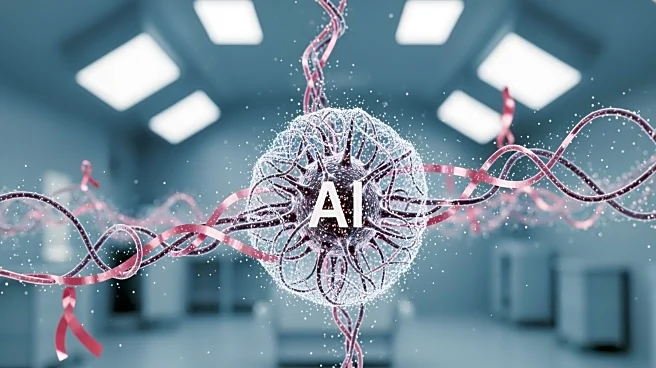What's Happening?
A recent study has validated the use of AI models for classifying urothelial neoplasms in digital pathology. Conducted across five university hospitals, the research involved training deep-learning models to
categorize bladder cancer cases into normal, noninvasive, and invasive categories. The study utilized 12,500 H&E-stained whole-slide images (WSIs) from patients diagnosed with or suspected of having bladder cancer. These images were digitized and processed using a cloud-based digital pathology platform, MeDIAuto, which facilitated remote access and labeling by pathologists. The AI models, including ResNet-50, DenseNet-121, EfficientNet-B6, and Vision Transformer (ViT), were trained using a patch-based extraction strategy to maintain critical histological details. The models demonstrated high accuracy in classifying the images, with performance metrics evaluated through a 5-fold cross-validation approach.
Why It's Important?
The validation of AI models for classifying urothelial neoplasms represents a significant advancement in digital pathology, potentially transforming cancer diagnosis and treatment. By automating the classification process, these models can enhance diagnostic accuracy and efficiency, reducing the workload on pathologists and improving patient outcomes. The ability to accurately distinguish between normal, noninvasive, and invasive cancerous tissues is crucial for determining appropriate treatment strategies. This development could lead to more personalized and timely interventions, ultimately improving survival rates and quality of life for patients with bladder cancer. Furthermore, the integration of AI in pathology could pave the way for similar applications in other types of cancer, broadening the scope of AI's impact in healthcare.
What's Next?
The successful validation of these AI models suggests potential for broader implementation in clinical settings. Hospitals and medical institutions may begin integrating these models into their diagnostic workflows, enhancing the speed and accuracy of cancer diagnoses. Future research could focus on refining these models to handle larger datasets and more complex cases, as well as exploring their applicability to other types of cancer. Additionally, regulatory bodies may need to establish guidelines for the use of AI in medical diagnostics to ensure patient safety and data privacy. Collaboration between AI developers, healthcare providers, and policymakers will be essential to address these challenges and maximize the benefits of AI in pathology.
Beyond the Headlines
The use of AI in digital pathology raises important ethical and legal considerations, particularly regarding data privacy and the potential for bias in AI algorithms. Ensuring that AI models are trained on diverse datasets is crucial to avoid biased outcomes that could affect patient care. Moreover, the reliance on AI for medical diagnoses necessitates robust validation and oversight to prevent errors that could have serious consequences for patients. As AI continues to evolve, ongoing dialogue between technologists, ethicists, and healthcare professionals will be necessary to navigate these complex issues and ensure that AI is used responsibly and effectively in medicine.











